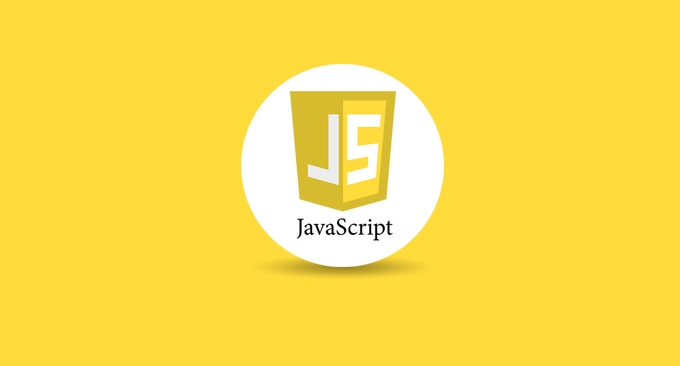Implementing Debouncing and Throttling techniques in JavaScript
Jul 06, 2025 am 02:21 AMDebounce and Throttle are techniques that control the frequency of function execution, suitable for different scenarios. Debounce is suitable for execution only if it does not trigger again for a period of time after the operation is stopped, such as input box search; Throttle is suitable for execution every fixed time, such as scrolling monitoring. When implementing, you need to pay attention to context and parameter passing, clear timer or update timestamps. The difference between the two is: Debounce focuses on the last operation, and Throttle focuses on regular execution. You can choose one of them according to your needs or use them in combination to improve performance and experience.

Sometimes you may find that functions triggered by certain user operations (such as input box search, window adjustment, or scrolling) are executed too frequently, resulting in performance degradation and even page stuttering. At this time, debounce and throttle come in handy.

They are essentially techniques that control the frequency of function execution, but the applicable scenarios are different:

- Debounce is suitable for "execution only after stopping the operation for a period of time"
- Throttle is suitable for "execution every fixed time"
What is Debounce? When to use it?
Simply put, the core idea of ??debounce is: after the event is triggered, wait for a period of time, and if it is not triggered again within this period of time, the function will be executed.
The most typical example is the input box search suggestion function. For example, when you type in the search box, you send a request every time you type a letter, and the server will definitely not be able to withstand it. At this time, you can add a debounce, for example, if you do not enter it within 300ms, you will initiate a request.

function debounce(func, delay) {
let timer;
return (...args) => {
clearTimeout(timer);
timer = setTimeout(() => func.apply(this, args), delay);
};
}How to use:
const searchInput = document.getElementById('search');
searchInput.addEventListener('input', debounce((e) => {
console.log('Send request:', e.target.value);
}, 300));Small details: Pay attention
apply(this, args)here to maintain the correct transmission of this and parameters, otherwise errors are prone to occur.
What is Throttle? How to use it?
Throttle is to ensure that the function is executed only once within a certain period of time. For example, scrolling listening, you want to check the position every 100ms instead of triggering every scroll.
function throttle(func, delay) {
let lastCall = 0;
return (...args) => {
const now = new Date().getTime();
if (now - lastCall >= delay) {
func.apply(this, args);
lastCall = now;
}
};
}Common usage scenarios are to monitor window size changes or scroll bar position:
window.addEventListener('resize', throttle(() => {
console.log('Window size changed');
}, 200));Note: This is not setTimeout, but records the timestamp to determine whether the cooling time has passed, which is more intuitive and easier to control.
The difference and choice between Debounce and Throttle
Although they can all limit the frequency of function execution, the time of use is different:
- Debounce is more suitable for situations where "the last operation counts", such as search, automatic saving, etc.
- Throttle is more suitable for "regular status checks" scenarios, such as scrolling, animation frame synchronization, etc.
You can choose one of them according to your needs or use them in combination. For example, first throttle control the frequency, then debounce waits for the final stability.
Let's summarize
It is actually not complicated to implement, the key is to understand their behavioral differences and application scenarios.
Pay attention to writing:
- Use
applyorcallto preserve context and parameters - Don't miss
clearTimeoutor timestamp updates - During testing, you can add
console.logto see the trigger frequency
Basically all of this is it. If these two techniques are used well, they can significantly improve the interactive experience and performance.
The above is the detailed content of Implementing Debouncing and Throttling techniques in JavaScript. For more information, please follow other related articles on the PHP Chinese website!

Hot AI Tools

Undress AI Tool
Undress images for free

Undresser.AI Undress
AI-powered app for creating realistic nude photos

AI Clothes Remover
Online AI tool for removing clothes from photos.

Clothoff.io
AI clothes remover

Video Face Swap
Swap faces in any video effortlessly with our completely free AI face swap tool!

Hot Article

Hot Tools

Notepad++7.3.1
Easy-to-use and free code editor

SublimeText3 Chinese version
Chinese version, very easy to use

Zend Studio 13.0.1
Powerful PHP integrated development environment

Dreamweaver CS6
Visual web development tools

SublimeText3 Mac version
God-level code editing software (SublimeText3)
 How to make an HTTP request in Node.js?
Jul 13, 2025 am 02:18 AM
How to make an HTTP request in Node.js?
Jul 13, 2025 am 02:18 AM
There are three common ways to initiate HTTP requests in Node.js: use built-in modules, axios, and node-fetch. 1. Use the built-in http/https module without dependencies, which is suitable for basic scenarios, but requires manual processing of data stitching and error monitoring, such as using https.get() to obtain data or send POST requests through .write(); 2.axios is a third-party library based on Promise. It has concise syntax and powerful functions, supports async/await, automatic JSON conversion, interceptor, etc. It is recommended to simplify asynchronous request operations; 3.node-fetch provides a style similar to browser fetch, based on Promise and simple syntax
 JavaScript Data Types: Primitive vs Reference
Jul 13, 2025 am 02:43 AM
JavaScript Data Types: Primitive vs Reference
Jul 13, 2025 am 02:43 AM
JavaScript data types are divided into primitive types and reference types. Primitive types include string, number, boolean, null, undefined, and symbol. The values are immutable and copies are copied when assigning values, so they do not affect each other; reference types such as objects, arrays and functions store memory addresses, and variables pointing to the same object will affect each other. Typeof and instanceof can be used to determine types, but pay attention to the historical issues of typeofnull. Understanding these two types of differences can help write more stable and reliable code.
 JavaScript time object, someone builds an eactexe, faster website on Google Chrome, etc.
Jul 08, 2025 pm 02:27 PM
JavaScript time object, someone builds an eactexe, faster website on Google Chrome, etc.
Jul 08, 2025 pm 02:27 PM
Hello, JavaScript developers! Welcome to this week's JavaScript news! This week we will focus on: Oracle's trademark dispute with Deno, new JavaScript time objects are supported by browsers, Google Chrome updates, and some powerful developer tools. Let's get started! Oracle's trademark dispute with Deno Oracle's attempt to register a "JavaScript" trademark has caused controversy. Ryan Dahl, the creator of Node.js and Deno, has filed a petition to cancel the trademark, and he believes that JavaScript is an open standard and should not be used by Oracle
 Handling Promises: Chaining, Error Handling, and Promise Combinators in JavaScript
Jul 08, 2025 am 02:40 AM
Handling Promises: Chaining, Error Handling, and Promise Combinators in JavaScript
Jul 08, 2025 am 02:40 AM
Promise is the core mechanism for handling asynchronous operations in JavaScript. Understanding chain calls, error handling and combiners is the key to mastering their applications. 1. The chain call returns a new Promise through .then() to realize asynchronous process concatenation. Each .then() receives the previous result and can return a value or a Promise; 2. Error handling should use .catch() to catch exceptions to avoid silent failures, and can return the default value in catch to continue the process; 3. Combinators such as Promise.all() (successfully successful only after all success), Promise.race() (the first completion is returned) and Promise.allSettled() (waiting for all completions)
 What is the cache API and how is it used with Service Workers?
Jul 08, 2025 am 02:43 AM
What is the cache API and how is it used with Service Workers?
Jul 08, 2025 am 02:43 AM
CacheAPI is a tool provided by the browser to cache network requests, which is often used in conjunction with ServiceWorker to improve website performance and offline experience. 1. It allows developers to manually store resources such as scripts, style sheets, pictures, etc.; 2. It can match cache responses according to requests; 3. It supports deleting specific caches or clearing the entire cache; 4. It can implement cache priority or network priority strategies through ServiceWorker listening to fetch events; 5. It is often used for offline support, speed up repeated access speed, preloading key resources and background update content; 6. When using it, you need to pay attention to cache version control, storage restrictions and the difference from HTTP caching mechanism.
 JS roundup: a deep dive into the JavaScript event loop
Jul 08, 2025 am 02:24 AM
JS roundup: a deep dive into the JavaScript event loop
Jul 08, 2025 am 02:24 AM
JavaScript's event loop manages asynchronous operations by coordinating call stacks, WebAPIs, and task queues. 1. The call stack executes synchronous code, and when encountering asynchronous tasks, it is handed over to WebAPI for processing; 2. After the WebAPI completes the task in the background, it puts the callback into the corresponding queue (macro task or micro task); 3. The event loop checks whether the call stack is empty. If it is empty, the callback is taken out from the queue and pushed into the call stack for execution; 4. Micro tasks (such as Promise.then) take precedence over macro tasks (such as setTimeout); 5. Understanding the event loop helps to avoid blocking the main thread and optimize the code execution order.
 Understanding Event Bubbling and Capturing in JavaScript DOM events
Jul 08, 2025 am 02:36 AM
Understanding Event Bubbling and Capturing in JavaScript DOM events
Jul 08, 2025 am 02:36 AM
Event bubbles propagate from the target element outward to the ancestor node, while event capture propagates from the outer layer inward to the target element. 1. Event bubbles: After clicking the child element, the event triggers the listener of the parent element upwards in turn. For example, after clicking the button, it outputs Childclicked first, and then Parentclicked. 2. Event capture: Set the third parameter to true, so that the listener is executed in the capture stage, such as triggering the capture listener of the parent element before clicking the button. 3. Practical uses include unified management of child element events, interception preprocessing and performance optimization. 4. The DOM event stream is divided into three stages: capture, target and bubble, and the default listener is executed in the bubble stage.
 A JS roundup of higher-order functions beyond map and filter
Jul 10, 2025 am 11:41 AM
A JS roundup of higher-order functions beyond map and filter
Jul 10, 2025 am 11:41 AM
In JavaScript arrays, in addition to map and filter, there are other powerful and infrequently used methods. 1. Reduce can not only sum, but also count, group, flatten arrays, and build new structures; 2. Find and findIndex are used to find individual elements or indexes; 3.some and everything are used to determine whether conditions exist or all meet; 4.sort can be sorted but will change the original array; 5. Pay attention to copying the array when using it to avoid side effects. These methods make the code more concise and efficient.






